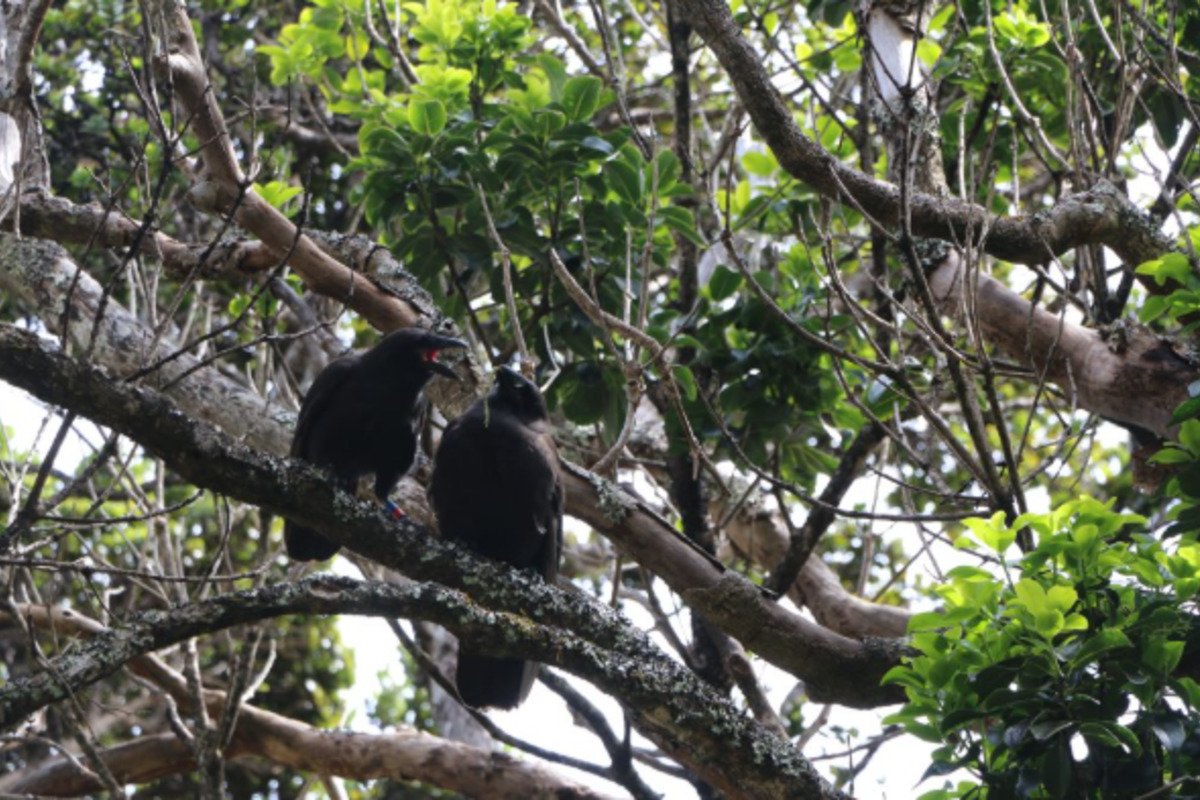In an engaging display of adaptability, a group of five ʻalalā, or Hawaiian crows, are defying the odds and thriving in the Kīpahulu Forest Reserve in East Maui. According to a recent report by the Department of Land and Natural Resources, these birds, released just five months ago, are successfully tapping into their species-specific behaviors despite several challenges.The ʻalalā, bred in captivity, were released into an environment quite different from their previous homes on Hawai'i Island.
Adapting to the unenclosed spaces of East Maui's forest had its hiccups, especially with a later-than-planned release smack in the wetter season. The use of technologies like GPS transmitters and automated feeders, new to ʻalalā release efforts, posed additional hurdles for the birds, which perhaps explains why expectations were moderated from the start. Yet, as Dr.

Hanna Mounce, program manager of the Maui Forest Bird Recovery Project (MFBRP), told the DLNR, "despite these challenges we can’t lose sight of what’s been accomplished here."The project is boldly pushing boundaries, monitoring the ʻalalā's newfound abilities to forage for native foods, seek shelter from inclement weather, and maintain social ties; all behaviors vital for their survival in the wild. The birds have honed their flight capabilities for longer travels and landing in dense forest regions, indulged in native plant foraging, and even expanded their vocal repertoire beyond what was observed in captivity.
Martin Frye, research field supervisor for the MFBRP, shared with the DLNR that "It’s not just an automatic switch to start engaging in wild behaviors. For some birds this progression can happen quicker, for others at a slower pace." It's clear, the room for growth and the careful monitoring provided by the team has been instrumental in these crows' journey toward wild independence.
There's more good news on the horizon: two additional ʻalalā are set to join this pioneering group later this year, after being prepared at the Maui Bird Conservation Center. Tess Hebebrand, an aviculture specialist with the MFBRP, explained that these individuals are undergoing a similar rigorous pre-release conditioning routine. The existing forest dwellers are expected to show interest in their new companions upon arrival.
Collaboration among the project partners continues to be pivotal. Frye highlighted the importance of shared experiences in informing the path forward, stating, "The success that we’ve had in this pilot project is largely built from previous efforts on Hawaiʻi Island and sharing lessons learned," as per DLNR..
Environment

Hawaiian Crows Excel in Wild After Release in East Maui's Kīpahulu Forest Reserve

Five ʻalalā crows adapt successfully in Maui after release, showcasing species-specific behaviors and resilience.















